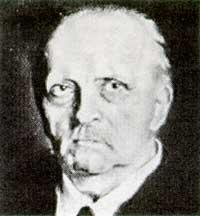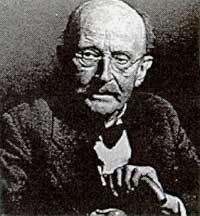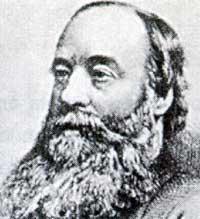Helmholtz, Herman von
1995/08/02 Azkune Mendia, Iñaki - Elhuyar Fundazioa | Kaltzada, Pili - Elhuyar Zientziaren Komunikazioa
(1821-1894)
This German physicist and physiologist joined the world of Potsdam in 1821. Like other members of his family, young Herman soon showed his tendency to medicine. He graduated in medicine in Berlin and carried out his first operations in Army hospitals. Upon leaving this work, he devoted himself to teaching, showing anatomy and physiognomy at Kaliningrad (1849) and at the University of Bonn (1858) and obtaining the chair of physics at the University of Berlin in 1871.

From 1851 he was concerned about the problem of the eye and vision. It is due to Helmholtzi the ophthalmoscope, the optical tool for studying the inside of the eye and the ophthalmometer, which measures the curvature of the eye. In collaboration with scientist Thomas Young, he developed theories about vision in three colors. Besides the sight, he also took care of the ear and in 1862 he came to define the sound timbre. According to Helmholtz, the bell depends on the relative intensity of the different harmonic sounds built on the basic sound, characteristic of the instrument or voice.
In physiology he was able to measure the speed of nerve impulses, completing what until then was considered a vacuum of science.
In any case, the most important contribution of Helmholtz are the two energetic discoveries made. On the one hand, he defined the potential energy as that which by its position, form or situation, has stored inside. And on the other hand, he enunciated the principle of energy conservation in 1847 (Mayer promulgated the same principle five years earlier, but Helmholtz was the first to overcome mere theory). According to Helmholtz's theory, energy is not produced or destroyed, but is transformed. As we know, this initiation is the fundamental basis of classical mechanics (relativistic and quantum mechanics claim that energy and mass are transformable together). Helmholtz wanted to use the same principle to study the origin of solar energy, but did not take into account radioactivity or nuclear energy. In any case, Helmholtz's theories and sessions served to guide the research of the following.
Herman von Helmholtz died in Charlottenburg in 1894.

Gai honi buruzko eduki gehiago
Elhuyarrek garatutako teknologia





